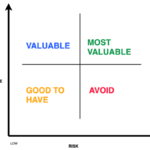
Customer Role in Agile Projects
15 December 2023
What is Azure HDInsight?
16 December 2023
Tags

Published by
BluePi
Data-Driven Business Transformation
Cloud Computing Scenario in 2018
Cloud computing brought about a remarkable overhaul of the phenomenon of companies having to put in significant capital investments to build software and IT infrastructure. Cloud Computing benefits your Business in many ways. The most positively affected were the small and medium enterprises, which hitherto were limited on several occasions from competing with the larger players, owing to a paucity of financial might needed to acquire the licenses, platforms, and infrastructure, and not necessarily on the grounds of innovation. Saas, PaaS, and IaaS turned things on their head and made it a level playing ground for all these entities.
The flexibility to pay for resources, based on need only, and on an incremental basis subsequently was nothing short of being liberating. The idea of being limited to one computer quickly became a thing of the past. Businesses were given a workspace where all their employees could interact regardless of their physical presence. Besides the cost advantage that it offered, there was the additional benefit of not having to spend resources on licensing, maintenance, installation and support activities otherwise needed for on-premise IT resources. In essence, the entire computing power needed for a business to operate could be outsourced.
Cloud computing gets done in 3 ways – Private, Public and Hybrid (But, before moving to hybrid Cloud, you should ask yourself 7 important questions). Over the years, organizations have, given their size and need, made use of the types most suited. This has also led to some stiff competition amongst the solutions providers. The current top 10 players in the field, in receding order of earnings, are Microsoft, Amazon Web Service, Salesforce, IBM, Google, SAP, Oracle, Workday, ServiceNow, and VMware.
Each of the players have had their unique propositions to credit for their ascent to the top. For instance, Amazon Web service gave self-service a new meaning in the manner in which it went about commoditizing offerings that millions could access and use without needing the assistance of serious technological experts. Salesforce, on the other hand, stood out for the user experiences it offered to complement the depth and breadth of its services. Overall, if one were to look at the 1st phase of the cloud computing era, the top providers of public-cloud IaaS have stood out in terms of their impact. However, as we stand today, a metamorphosis has already begun. The future hints at some paradigm shifts.
Software:
Infrastructure will become a commodity and the focus will shift towards offering services that are easily consumable, yet capable of addressing complex needs. This is where Artificial Intelligence will showcase its relevance. It is quite well known that we are just scratching the surface as far as realizing the potential of Artificial Intelligence is concerned. Moving forward, the solution providers will invest all their energies into harnessing its potential as they offer their cloud-based services. So, the cloud-focused enterprise software companies or the ones whose DNA lies in software engineering will have great prospects in the future if they are able to put their act together.
Data Security:
Data in today’s world is vulnerable and will continue to be so moving forward. Thus, the security of the data centers will continue to be of paramount importance, drawing a significant amount of focus and investments to ward off possibilities of data breaches as the attempts get more sophisticated and precise. The methodologies used for data authentication, encryption, integrity, and management will get deeper and more complex.
Hybrid:
Organizations will in parallel leverage the private clouds as well as the hyper-scale offered by the public ones and might look at using the services from multiple providers to avoid possibilities of any lock-in.
Customers:
About the Author

Published by
BluePi
Data-Driven Business Transformation

































